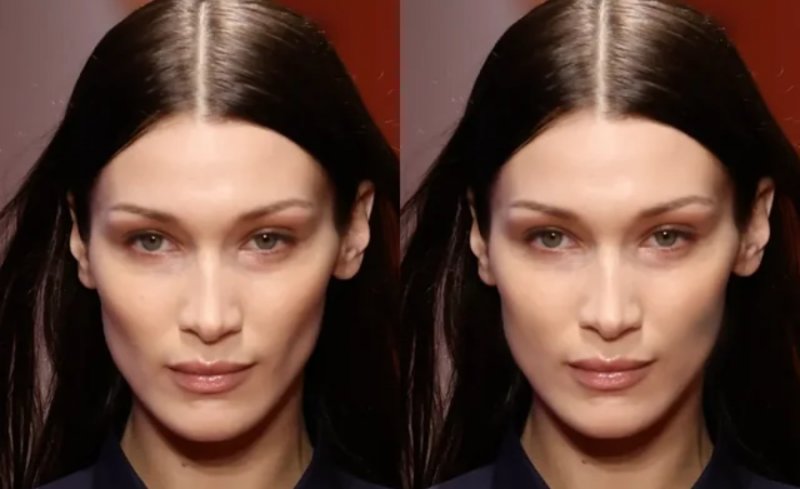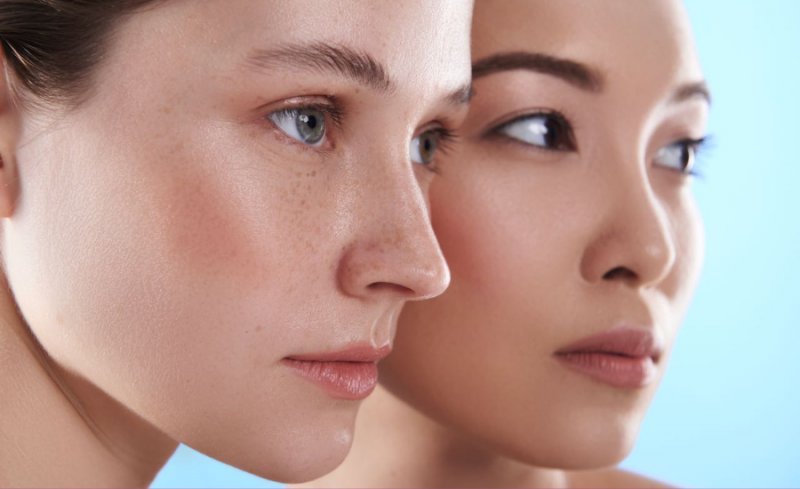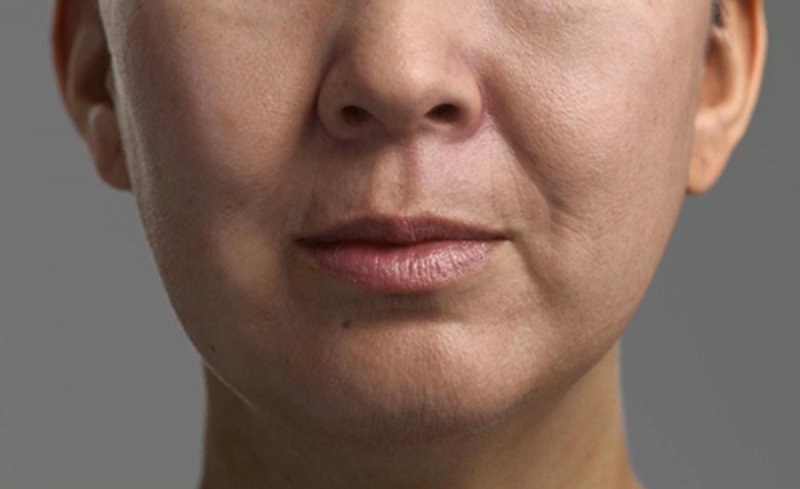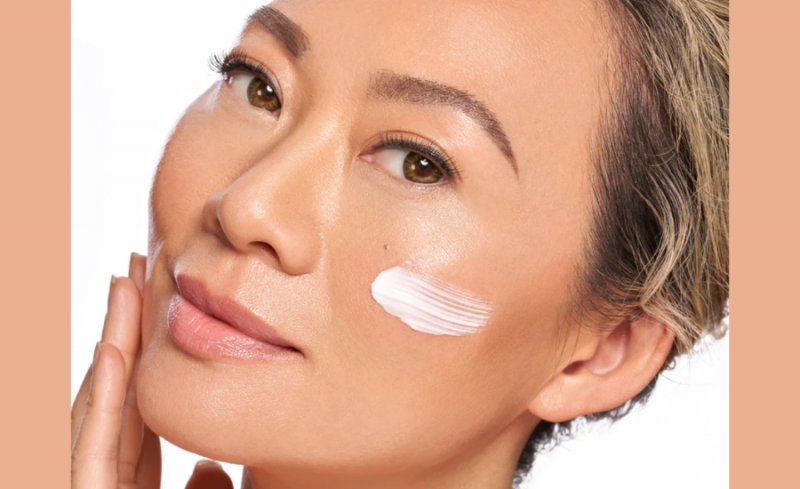Unlocking the Secrets of Hollow Cheeks: Causes, Treatments, and Prevention
Hollow cheeks, a common facial concern, refer to a sunken or deflated appearance in the cheek area. The loss of volume in the cheeks can result in a tired, aged, or gaunt appearance, impacting an individual’s overall facial aesthetics. It’s part of aging, although other causes can cause it.
The importance of facial fullness goes beyond mere aesthetics. A well-defined, youthful face with plump cheeks is often associated with vitality, health, and attractiveness. However, as we age, our facial fat pads diminish, collagen and elastin production slows down, and bone structure changes, leading to a gradual loss of facial volume.
The psychological impact of sunken cheeks should not be underestimated either. Many individuals who experience this concern may develop self-consciousness and feel dissatisfied with their appearance, affecting their self-esteem and confidence.
In this comprehensive article, we will delve into the intricate details of hollow cheeks, exploring its causes, ways to recognize and prevent it, as well as various treatment options available. By gaining a better understanding of hollow cheeks, individuals can make informed decisions about their skincare and beauty regimens, ultimately embracing their natural beauty and finding the right solutions to address this common facial issue.
Understanding Facial Anatomy and Aging

Facial anatomy and the aging process play a significant role in the development of hollow cheeks. To comprehend this phenomenon better, let’s explore the intricate relationship between facial structures and how aging affects them.
The Structure of the Cheeks and Facial Fat:
The cheeks consist of various layers, including skin, subcutaneous fat, muscles, and underlying bone. The subcutaneous fat pads provide volume and support, contributing to the plumpness of youthful cheeks. These fat pads are strategically distributed across the cheeks, creating a smooth and contoured appearance.
The Role of Collagen and Elastin:
Collagen and elastin give skin structure. Elastin restores the skin’s structure after stretching, while collagen keeps it firm. Collagen and elastin diminish with age, causing skin laxity and facial volume loss.
How Aging Affects Facial Volume:
As time goes on, the facial fat pads naturally begin to diminish in size, and the skin loses its ability to retain moisture, resulting in decreased facial fullness. Collagen and elastin degeneration also sags and loses suppleness. The combination of reduced fat and sagging skin contributes to the appearance of hollow cheeks.
Moreover, changes in the facial bone structure can also influence the development of hollow cheeks over time. The bones in the face slowly change shape and density as we age, which can further accentuate the sunken look in the cheeks.
Understanding the interplay of facial anatomy and the aging process is crucial in addressing hollow cheeks effectively. By comprehending the underlying factors contributing to this concern, individuals can explore suitable treatment options to restore facial volume and achieve a more youthful, rejuvenated appearance.
Common Causes of Hollow Cheeks
Hollow cheeks can be attributed to several common causes, each contributing to the loss of facial volume and the sunken appearance. One of the primary factors behind hollow cheeks is the natural aging process. As we age, collagen and elastin production decreases, which reduces skin suppleness and firmness. Additionally, the fat pads that provide fullness to the cheeks gradually diminish with age, resulting in a loss of facial volume.
Another significant cause of hollow cheeks is weight loss. Weight loss, especially in the face, can reduce the subcutaneous fat layer, making the cheeks appear sunken. This weight-related loss of facial volume can give the face a gaunt and aged appearance.

Genetics also influence cheek fat distribution. Some people are genetically predisposed to hollow cheeks as they age due to reduced cheek fat.
Common causes of hollow cheeks include the natural aging process, weight loss, and genetic factors. Understanding these underlying causes can help individuals take proactive steps to address and prevent the appearance of hollow cheeks through appropriate skincare, lifestyle adjustments, and various treatment options available.
Recognizing the Signs of Hollow Cheeks
Recognizing the signs of hollow cheeks is essential to identify this common facial concern and take appropriate steps for its management. The cheeks get sunken, making the face appear less defined. This sunken look can create shadows under the cheekbones, making the face appear gaunt and aged.
Another indicator of hollow cheeks is the prominence of the facial bones. As the fat pads in the cheeks diminish, the underlying bone structure becomes more visible, further contributing to the sunken appearance. This can be particularly noticeable around the temples and mid-face area.
Individuals with hollow cheeks may also experience changes in the way their facial features are perceived. The eyes might appear more prominent, and the nasolabial folds (smile lines) may become more pronounced due to the loss of support from the cheeks.
Moreover, hollow cheeks can impact the overall facial balance and harmony, affecting an individual’s self-perception and confidence. People who notice such changes in their facial appearance, especially as they age or after significant weight loss, should consider consulting a healthcare professional or a cosmetic expert to explore suitable treatment options to address this concern and regain facial fullness.
The Connection Between Lifestyle and Facial Volume
The connection between lifestyle and facial volume is a crucial aspect to consider when addressing concerns like hollow cheeks. Various lifestyle factors can significantly impact the overall appearance and fullness of the face.
One key lifestyle element that affects facial volume is smoking and alcohol consumption. Smoking accelerates collagen and elastin breakdown, causing accelerated aging and facial volume loss. Additionally, excessive alcohol intake can dehydrate the body and the skin, making the face look tired and dull while exacerbating the appearance of hollow cheeks.
Diet and nutrition also play a vital role in maintaining facial fullness. Healthy skin and collagen production require a balanced diet with vitamins, minerals, and nutrients. Antioxidant-rich diets prevent skin from free radical damage and keep it youthful.

Furthermore, weight fluctuations and crash diets can affect facial volume. Rapid weight loss can lead to a reduction in the fat pads in the cheeks, resulting in hollow cheeks. It is crucial to maintain a stable and healthy weight to preserve facial fullness.
Another lifestyle aspect that can impact facial volume is stress and lack of sleep. Cortisol levels rise with chronic stress, affecting collagen formation and aging. Lack of sufficient sleep can also lead to skin dehydration and a tired appearance, making hollow cheeks more prominent.
Lifestyle choices such as smoking, alcohol consumption, diet, weight management, stress, and sleep patterns can all influence facial volume and the development of hollow cheeks. Adopting a healthy lifestyle, along with proper skin care and possible treatments, can help individuals maintain facial fullness and achieve a more youthful and vibrant appearance.
Surgical Options for Sunken Cheeks
Surgical options are available for individuals seeking more permanent solutions to address sunken or hollow cheeks. These procedures can effectively restore facial volume and provide a rejuvenated appearance. Two common surgical options for sunken cheeks are facelifts and cheek implants.
Facelifts:
A facelift, also known as a rhytidectomy, is a surgical procedure that targets facial sagging and wrinkles. While primarily designed to address signs of aging in the lower face and neck, a facelift can also have a positive impact on hollow cheeks. During the procedure, the surgeon tightens the underlying facial muscles and removes excess skin, creating a smoother and more lifted appearance. By tightening the facial tissues, a facelift can indirectly improve facial volume and reduce the appearance of sunken cheeks.
Cheek Implants:
Cheek implants, also referred to as malar or subtalar implants, involve the placement of synthetic implants in the cheek area to enhance facial contours and restore volume. These biocompatible implants come in various sizes and forms to suit individual demands. The surgery is typically performed under general anesthesia or local anesthesia with sedation. Cheek implants provide a permanent solution to hollow cheeks by augmenting the cheekbones and enhancing the overall facial balance.
Facelifts and cheek implants require careful consideration and consultation with a skilled plastic surgeon. The choice of procedure will depend on individual factors such as the extent of facial aging, the desired outcome, and the surgeon’s recommendations. Surgical techniques can yield long-term results, but they carry dangers and need recovery time.
Before opting for any surgical treatment, it is essential to thoroughly discuss expectations, potential complications, and post-operative care with the surgeon. Understanding the benefits and limitations of each surgical option can help individuals make informed decisions and achieve their desired facial rejuvenation goals.
Natural Remedies for Hollow Cheeks
While surgical and medical interventions can be effective in addressing hollow cheeks, some individuals may prefer exploring natural remedies before considering more invasive treatments. It’s important to note that natural remedies may not provide the same dramatic results as surgical procedures or dermal fillers, but they can contribute to overall skin health and potentially help improve facial volume over time. Here are some natural remedies worth considering:
Facial Exercises: Some proponents suggest that specific facial exercises can help tone the muscles in the cheeks and improve facial fullness. These exercises typically involve various facial movements, such as smiling, puffing out the cheeks, and holding specific expressions. Facial exercises may improve blood circulation and skin suppleness.
Facial Massage: Gentle facial massages can stimulate blood flow and lymphatic drainage in the face, potentially reducing puffiness and promoting a more youthful appearance. Using upward and outward strokes, gently massage your cheeks with your fingertips or a facial roller. Avoid excessive pressure and tugging, which can harm the skin.
Topical Products: Retinol, hyaluronic acid, and peptide lotions and serums may moisturise and smooth skin. Hyaluronic acid retains moisture and plumps skin. While these products won’t directly add volume to the cheeks, they can enhance overall skin health and contribute to a more youthful complexion.

Diet and Nutrition: A well-balanced diet rich in vitamins and minerals can support skin health and overall facial appearance. Berries, leafy greens, and almonds are antioxidant-rich and may stimulate collagen production.
Hydration: Skin elasticity and fullness depending on hydration. Hydrating throughout the day improves skin look.
Sun Protection: Protecting the skin from harmful UV rays is essential for preventing premature aging and maintaining facial volume. Regularly apply sunscreen with adequate SPF and avoid prolonged sun exposure.
While natural remedies can complement other treatments and contribute to healthy skin, it’s essential to manage expectations. Results from natural remedies may vary from person to person, and for individuals seeking more significant improvements, consulting with a dermatologist or plastic surgeon to explore medical options may be a more suitable approach.
Combining Procedures for Optimal Results
Combining procedures can offer optimal results for individuals looking to address multiple facial concerns, including hollow cheeks. By strategically combining different treatments, it is possible to achieve a more comprehensive and balanced facial rejuvenation. For instance, some individuals may choose to combine dermal fillers with other non-surgical treatments to enhance facial volume and address wrinkles simultaneously. Dermal fillers can add volume to the cheeks, lifting and plumping the sunken areas, while other treatments like Botox can target fine lines and wrinkles in other parts of the face.
Non-surgical and surgical treatments can improve and last longer. For individuals seeking a significant enhancement of facial volume and structure, cheek implants or fat transfer surgery can be complemented with dermal fillers or Botox to address specific problem areas. This allows for a more personalized treatment plan.

However, it is essential to approach combined procedures with caution and under the guidance of qualified medical professionals. Each person’s facial anatomy and concerns are unique, and not all treatments may be suitable for combination. A thorough consultation with a skilled cosmetic surgeon or dermatologist is crucial to assess the individual’s facial features, discuss desired outcomes, and determine the most appropriate combination of treatments.
Safety and procedure timing should be prioritized to allow for optimal healing and recuperation between treatments. To keep patients comfortable and informed, doctors must communicate.
Combining procedures can offer a powerful and effective approach to achieving optimal results in addressing hollow cheeks and other facial concerns. By carefully tailoring a treatment plan to each individual’s needs, individuals can achieve a harmonious and natural-looking facial rejuvenation that enhances their overall appearance and boosts self-confidence.
Managing Expectations and Potential Risks
Managing expectations and understanding the potential risks are crucial aspects when considering any cosmetic procedure, especially those aimed at addressing concerns like hollow cheeks. While modern treatments can yield impressive results, it’s essential for individuals to have realistic expectations about the outcomes. Every person’s facial anatomy is unique, and the extent of improvement achievable may vary. It is important to communicate openly with the medical provider, discussing specific goals and understanding what can be realistically achieved.
Any technique carries hazards. Dermal fillers and Botox are safe, although they may cause bruising, swelling, or allergic reactions. Infection, scarring, and anesthesia issues are concerns of cheek implants and facelifts.
To minimize risks, it’s crucial to choose a reputable and experienced medical professional who specializes in the specific procedure being considered. Researching and verifying the credentials of the provider can help ensure a safer and more satisfactory experience. The doctor should discuss the procedure’s dangers and precautions during the appointment.
Moreover, individuals should have a clear understanding of the recovery process and any post-operative care required. Following the doctor’s instructions and attending follow-up appointments are essential for a successful outcome.
Prioritizing safety and informed decision-making is key to managing expectations and reducing potential risks. Cosmetic procedures can increase self-confidence and appearance, but they should be approached with realism and medical supervision. Open communication and a thorough understanding of the procedure can lead to a positive and satisfying experience, resulting in a more natural and rejuvenated appearance.
Tips for Maintaining Facial Fullness

Maintaining facial fullness is essential for preserving a youthful and vibrant appearance. While some loss of facial volume is a natural part of the aging process, there are several tips individuals can follow to help maintain and enhance facial fullness:
Adequate Hydration: Staying well-hydrated is crucial for healthy skin and maintaining facial volume. Water keeps skin moisturized and plump.
Sun Protection: Protecting the skin from harmful UV rays is vital for preventing premature aging and volume loss. Wear sunscreen with a high SPF, protective clothes, and sunglasses when outside.
Balanced Diet: Antioxidants, vitamins, and minerals help collagen development and skin health. Eat lots of fruits, veggies, nutritious grains, and lean proteins.
Facial Exercises: Some facial exercises may tone and fullen the face, however, the evidence is limited. Gentle exercises like smiling, puffing out the cheeks, and chewing gum can be incorporated into a regular skincare routine.
Topical Products: Use retinol and hyaluronic acid skincare products. These chemicals improve skin texture, hydration, and face attractiveness.
Avoid Smoking and Excessive Alcohol: Smoking accelerates collagen breakdown, leading to premature aging and volume loss. Limiting alcohol intake can also help maintain skin health and reduce facial puffiness.
Proper Sleep and Stress Management: Getting enough restful sleep and managing stress can positively impact overall skin health and reduce the appearance of tired or sunken cheeks.
Regular Exercise: Engaging in regular physical activity can promote good circulation, which benefits the skin and helps maintain facial fullness.
Consult with a Dermatologist or Plastic Surgeon: If considering non-surgical or surgical treatments to enhance facial fullness, consult with a qualified medical professional to explore suitable options and create a personalized treatment plan.
Lifestyle Choices: Making overall healthy lifestyle choices, such as avoiding crash diets and maintaining a stable weight, can also contribute to maintaining facial fullness.
Remember that individual results may vary, and it’s essential to have realistic expectations. Maintaining facial fullness is a combination of skincare practices, healthy habits, and if desired, professional treatments. By taking proactive steps to care for the skin and overall well-being, individuals can support facial volume and enjoy a more youthful and radiant appearance.
People Also Ask (FAQs)
How do I know if I have hollow cheeks?
Hollow cheeks are characterized by a sunken or deflated appearance in the cheek area. You may notice shadows under your cheekbones or a loss of facial volume, especially when comparing your current appearance to older photographs. If you’re worried about your face contours or your cheeks’ fullness, see a doctor or cosmetic professional.
Can hollow cheeks be reversed without surgery?
Yes, hollow cheeks can be addressed without surgery through non-surgical treatments like dermal fillers or fat transfer. Hyaluronic acid fillers can restore face volume and make the cheeks look younger. Fat transfer uses your body’s fat from one location to inject into the cheeks for a natural, long-lasting effect.
Are dermal fillers safe for facial rejuvenation?
When administered by a trained doctor, dermal fillers are safe for face rejuvenation. Fillers often cause injection-site bruising and swelling. For optimal results and safety, find a reputed service and follow their advice.
What can I do to prevent hollow cheeks?
While some factors like aging and genetics are beyond control, certain lifestyle choices can help prevent or delay the appearance of hollow cheeks. Sunscreen, a nutritious diet, hydration, not smoking, and stress management can help maintain facial fullness and skin health.
How long do the results of non-surgical treatments last?
The duration of results from non-surgical treatments like dermal fillers varies depending on the type of filler used and individual factors. Hyaluronic acid fillings typically last 6–12 months. Fat transfer results can be more long-lasting, as the transplanted fat becomes a part of your natural facial tissue. To maintain the results, follow-up treatments or touch-ups may be recommended.
Stay in touch to get more updates & alerts on Hint! Thank you







